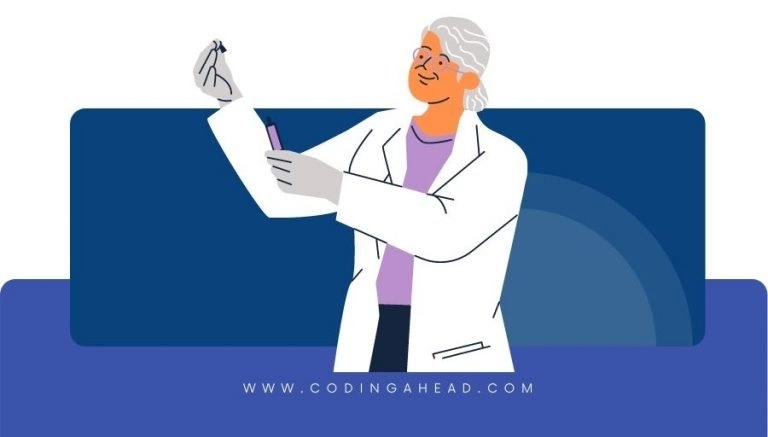How To Use CPT Code 26770
CPT 26770 describes the closed treatment of a single interphalangeal joint dislocation without anesthesia. This article will cover the description, official details, procedure, qualifying circumstances, appropriate usage, documentation requirements, billing guidelines, historical information and billing examples.
1. What is CPT Code 26770?
CPT 26770 is used to describe the closed treatment of a single interphalangeal joint dislocation without the use of anesthesia. This code is used when a healthcare provider manually manipulates or adjusts the dislocated bone to bring it back into its normal alignment. The procedure does not involve any surgical incisions or the use of hardware to stabilize the joint.
2. Official Description
The official description of CPT code 26770 is: ‘Closed treatment of interphalangeal joint dislocation, single, with manipulation; without anesthesia.’
3. Procedure
- The healthcare provider begins by assessing the dislocated interphalangeal joint through an X-ray examination.
- Using manual manipulation techniques, the provider carefully adjusts the dislocated bones, bringing them back into their normal alignment.
- No anesthesia is used during this procedure.
- After the reduction of the dislocation, the provider immobilizes the digit by placing it in a brace or splint.
- The patient is typically instructed to wear the brace or splint for approximately four weeks to allow for proper healing.
- Follow-up X-rays may be performed to confirm the successful reduction of the dislocation.
4. Qualifying circumstances
CPT 26770 is applicable when a patient presents with a single interphalangeal joint dislocation that can be manually manipulated without the need for anesthesia. This code is used for closed treatment, meaning there are no surgical incisions or the use of hardware to stabilize the joint. It is important to note that this code specifically applies to a single joint dislocation.
5. When to use CPT code 26770
CPT code 26770 should be used when a healthcare provider performs a closed treatment of a single interphalangeal joint dislocation without the use of anesthesia. This code is not appropriate for cases involving multiple joint dislocations or when anesthesia is required for the manipulation.
6. Documentation requirements
To support a claim for CPT 26770, the healthcare provider must document the following information:
- Patient’s diagnosis of a single interphalangeal joint dislocation
- Details of the closed treatment procedure performed, including the manipulation technique used
- Date of the procedure
- Documentation of any X-ray examinations performed
- Instructions given to the patient regarding immobilization with a brace or splint
7. Billing guidelines
When billing for CPT 26770, ensure that the procedure performed meets the criteria of a closed treatment of a single interphalangeal joint dislocation without anesthesia. It is important to accurately document the procedure and provide the necessary supporting documentation. CPT code 26770 should not be reported with other codes for additional procedures performed on the same joint or for the use of anesthesia.
8. Historical information
CPT code 26770 was added to the Current Procedural Terminology system on January 1, 1990. There have been no updates or changes to the code since its addition.
9. Examples
- A healthcare provider manually manipulates a dislocated interphalangeal joint in a patient’s finger, successfully reducing the dislocation without the use of anesthesia.
- Using careful manipulation techniques, a provider realigns the bones of a dislocated interphalangeal joint in a patient’s hand, achieving a successful reduction of the dislocation.
- Without the need for anesthesia, a healthcare provider manually adjusts the dislocated bones of a patient’s interphalangeal joint, restoring normal alignment.
- A provider performs closed treatment on a single interphalangeal joint dislocation in a patient’s finger, skillfully manipulating the bones back into their proper position without the use of anesthesia.
- Using manual manipulation techniques, a healthcare provider successfully reduces a dislocated interphalangeal joint in a patient’s hand, providing closed treatment without anesthesia.
- A provider performs closed treatment on a single interphalangeal joint dislocation in a patient’s finger, skillfully manipulating the bones back into their proper position without the use of anesthesia.
- Without the need for anesthesia, a healthcare provider manually adjusts the dislocated bones of a patient’s interphalangeal joint, restoring normal alignment.
- A provider performs closed treatment on a single interphalangeal joint dislocation in a patient’s finger, skillfully manipulating the bones back into their proper position without the use of anesthesia.
- Using manual manipulation techniques, a healthcare provider successfully reduces a dislocated interphalangeal joint in a patient’s hand, providing closed treatment without anesthesia.
- A provider performs closed treatment on a single interphalangeal joint dislocation in a patient’s finger, skillfully manipulating the bones back into their proper position without the use of anesthesia.


